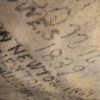For the first time since Saturday, March 31, 1866 — which is almost 152 years ago — the celestial phenomenon of a full lunar eclipse on a super blue blood moon will occur prior to sunrise on Wednesday, January 31, 2018.
Where to See the Lunar Eclipse Trifecta of a Super Blue Blood Moon on January 31, 2018

Weather permitting, the best places to view this event are in the states of Illinois, Wisconsin, western Michigan, and virtually anywhere else in the United States which is west of the Mississippi River — including Hawaii — as well as all areas of Canada north and west of Sault Saint Marie; and most areas of Mexico west of the states of Tabasco and Chiapas…
…and you can also witness this rare event in the Middle East, Asia, eastern Russia, Australia and New Zealand during moonrise on the same morning.
People located in parts of the earth between the aforementioned locations who will not be able to experience the lunar eclipse at all include eastern Maine, the maritime provinces of eastern Canada, and most of Europe, Africa and South America.
Three reasons are given for why this lunar event is so special, according to this article which was edited by Tricia Talbert of the National Aeronautics and Space Administration of the United States, which is more popularly known as NASA:
It’s the third in a series of “supermoons,” when the Moon is closer to Earth in its orbit — known as perigee — and about 14 percent brighter than usual. It’s also the second full moon of the month, commonly known as a “blue moon.” The super blue moon will pass through Earth’s shadow to give viewers in the right location a total lunar eclipse. While the Moon is in the Earth’s shadow it will take on a reddish tint, known as a “blood moon.”
Unfortunately, the total lunar eclipse will begin at 5:51 in the morning Eastern Standard Time if you are located in the Eastern Time Zone, which presents two challenges: the sun will cause the sky to get brighter as the moon sets in the western sky. In cities such as New York and Chicago, the moon is scheduled to set at 7:06 in the morning. Witnesses of this event in these areas may be able to experience a partial lunar eclipse; but do not expect much.
The aforementioned article has more details and information pertaining to this event.
Summary
You might get a slightly better view of the trifecta event of a full lunar eclipse, a super blue moon and a blood mood during a flight from an airplane if you are located in the zones where the event can be seen…
…and although this occurrence is rare, it will not receive the massive attention of the total eclipse of the sun on Monday, August 21, 2017 — which I almost missed — but if celestial events such as these interest and excite you, perhaps you may want to consider traveling to the prime locations to view it for yourself.
Photograph ©2017 by Brian Cohen.

